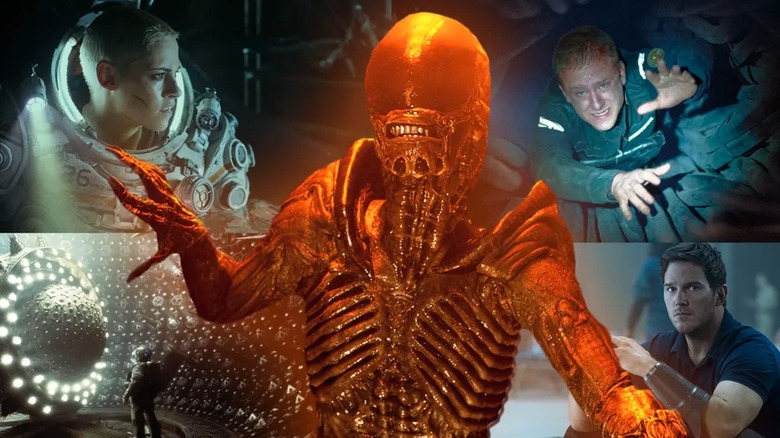
Science fiction is the exploration of our practical imaginations. Its stories can be fantastic, uplifting, and horrifying but they need to remain grounded in a scientifically applied reality -- a reality we already understand or one that's clearly explained. Without these rules governing our experiences, our exploration becomes untethered from reality and sails off into obscurity, and no CGI velociraptor, animatronic android, or puppet-like killer shrew is going to save it. Or can it? If Dr. Ian Malcolm were a film historian, his cinematic chaos theory would predict that over time, lovingly crafted cinema, like life, breaks free, expands to new territories, and crashes through barriers, painfully, maybe even dangerously.
In their era, masterpieces like "The Thing" may have been a little too much for audiences. Some critics struggled to see the beauty present in John Carpenter's classic beyond the gore and creatures. Over time, though, a cinematically enlightened public can now appreciate the artistry behind the chest-ripping — and dissertate the plot's central themes about the frailty of man (men, really) and the decay of humankind. In that spirit, I present to you 14 critically panned sci-fi movies of the past that deserve more love and respect in the present and future. Similar to my fantasy-focused list last month, I include quotes that match the critical consensus of the time and tell you why you should look past oldfangled perceptions to enjoy some of Hollywood's most imaginative and fun scientific explorations.
The Black Hole (1979)
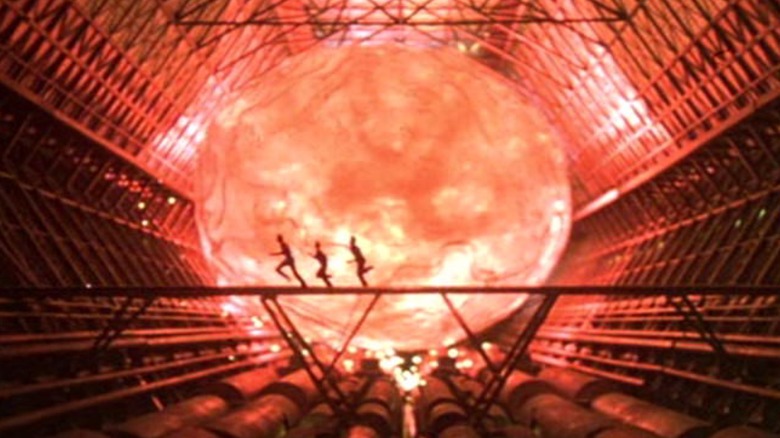
"There's something endearingly human about our ability to take the most astonishing ideas and treat them in trivial stories." -- Roger Ebert, January 1, 1979
Space is an infinite void, but it's rich with potential. Disney spent $20 million to send the USS Palomino on a mission to mine "Star Wars" and "Star Trek" fans for box office receipts. It worked; Disney took in $37 million but the ride was bumpy. In 1979, Ebert called "The Black Hole" a talky melodrama and labeled the black hole a gimmick. He's right. There is too much chatter and the black hole is just a backdrop, but it looks fantastic. The artistic team created 150 matte paintings, hand-made models, and projections of models to establish a sensational celestial setting.
I get the problem — "The Black Hole" feels like one "Star Wars: A New Hope" scene stretched out over 98 minutes. That doesn't take away from the vivid visual work that won the movie two Oscars or John Barry's fun, futuristic score. You may laugh at some of the robot designs that didn't age well, or the voices behind them (Slim Pickens as a robot? What?!?), but it's a journey worth taking. The climax's "sensational visual payoff" (Ebert's words, not mine) is amazing even today and is followed by an ending that looks like an Iron Maiden album cover summoned into "Fantasia." Despite the bumpy ride, "The Black Hole" is one I'll take again when Disney finally releases a 4K version.
Metalstorm: The Destruction Of Jared-Syn (1983)
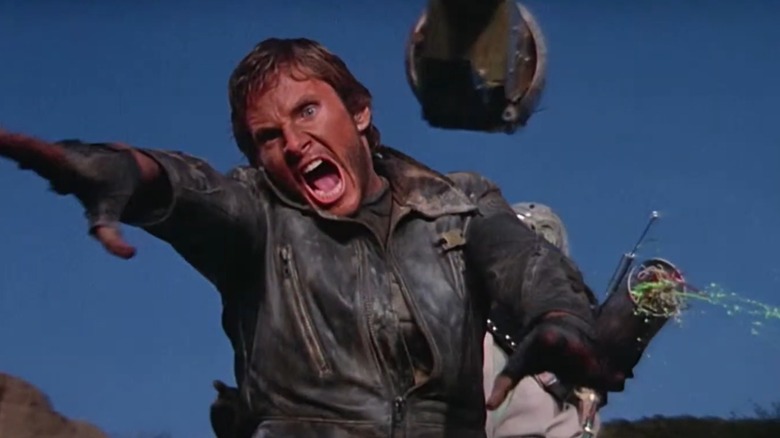
"... exudes the aroma of something desperately hustled onto celluloid one afternoon on location with limited stock and non-pros in the leads." -- Gary Arnold, The Washington Post, August 23, 1983
Resources are limited in most post-apocalyptic wastelands. I'm sure resources were limited making "Metalstorm: The Destruction of Jared-Syn." It may have been hustled onto film, as Arnold suggests, but it's still done with enough care to stand out among the era's many post-nuclear landscapes. "Metalstorm" treads the path that "Mad Max" wore deep into its dust-covered, sun-drenched backlands -- and I'm fine with that. Any time I see a gang of mutant humanoids rolling deep in a hand-welded death truck, I'm calling shotgun.
Speaking of mutant humanoids, Richard Moll gives his everything as Hurok, leader of the Cyclopeans. Commitment is a common theme in every low-fi, sci-fi cinematic wasteland that shows signs of life on screen. You can tell when the actors want to be there. Moll said he reached out for his role knowing it required extensive makeup. When you get people to buy in, it shows, like when Tim Thomerson inserts a little Han Solo sidekick charm into Rhodes and Michael Preston flashes his "Mad Max" pedigree as the powerful Jared-Syn. Sure the slo-mo fight sequences drag and the chases go nowhere, but there's enough cinematic sparkle for genre fans to enjoy -- now in 3D! The Shout Factory gang mined a 3D transfer for its Blu-ray. Good luck finding "Metalstorm" anywhere else.
The Ice Pirates (1984)
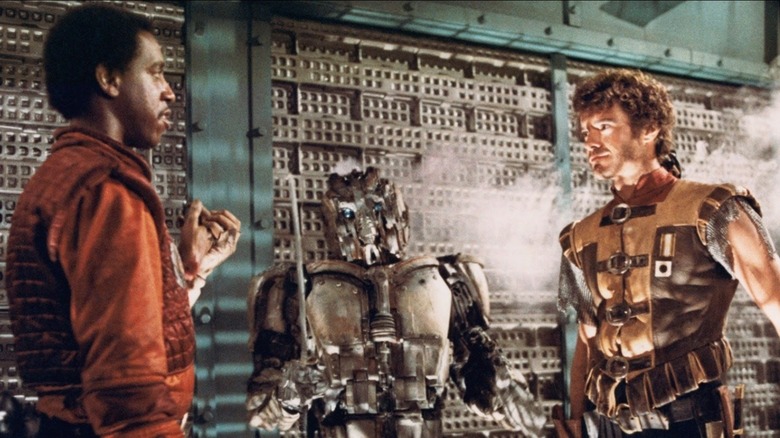
"... bewildering, exceedingly jokey science fiction film that looks like a 'Star Wars' spinoff made in an underdeveloped galaxy." -- Vincent Canby, The New York Times, March 16, 1984
I love when movies make an early promise about the experience you're about to have. "Ice Pirates" wastes no time as Robert Urich, Anjelica Huston, Michael D. Roberts, and Ron Perlman (how's that for a cast!?) bust through a spaceship bathroom, interrupting an alien mid-discharge, just to bungle an ice caper with all the face-planting flair of an amateur ice capade. Canby is correct, this spinoff is underdeveloped, but its half-baked goofiness still lands for me.
"The Ice Pirates" is a satire that targets the usual suspects. "Star Wars," "Robin Hood," "Alien," and "Mad Max" all get ribbed, but this is no one-trick pony (*cough* "Spaceballs" *cough*). The gags and one-liners stand on their own, though they have a nip of boozy sway to them and range from bawdy (castration assembly line) to buffoonish (clumsy robots), childish (space herpes) to sometimes dark (baby robot cries for dead mom), and occasionally offensive (you'll see). The low-brow humor, though, isn't what drives the movie. Every street, spaceship, and cantina teems with creative life. Few "Star Wars" spinoffs from this era show this kind of thoughtfulness with their prop usage, set design, space-age costumes, and commitment from extras and side characters. The movie can be bewildering at times because of the excessive jokes, but that's also the fun of it.
Invaders From Mars (1986)
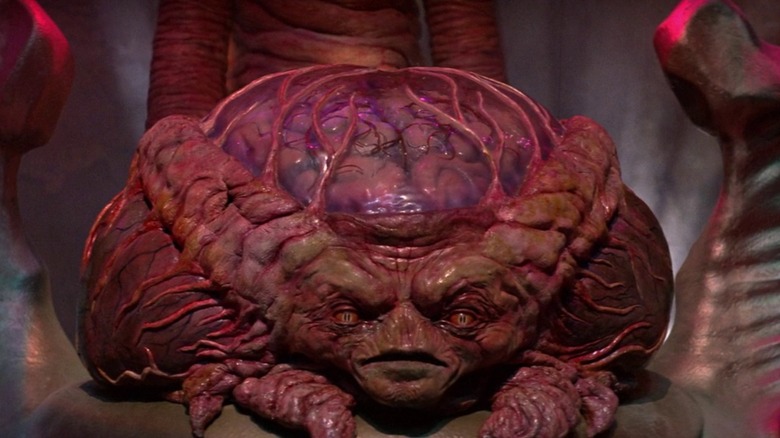
"The original 'Invaders From Mars' did something this spoof never even comes close to -- it scared the heck out of you." -- Paul Attanasio, The Washington Post, June 9, 1986
Attanasio is right, "Invaders from Mars" is not scary. However, it is a Cannon movie and a collaboration between Tobe Hooper ("Poltergeist") and Dan O'Bannon ("Return of the Living Dead") -- and that should be enough to grab your interest. In the director's chair, Hooper shows off what he learned from his "Poltergeist" partnership with Steven Spielberg. "Invaders" is soaked with sunny suburban Amblin vibes. There's even a frog-in-the-jar classroom scene. But we soon find out no one is safe in this small town, not a formaldehyde-infused frog and definitely not 12-year-old David Gardner. Hunter Carson brings just enough wide-eyed alarm and windmill-armed running to the role to make you feel David's anxiety as everyone turns on him -- even his dad George (Timothy Bottoms doing his best Paul Rudd years before Paul Rudd was doing Paul Rudd).
The first half of "Invaders" feels like a kid's version of "Invasion of the Body Snatchers." The second half ditches the mystery and goes full-on creature feature. Hooper and effects master Stan Winston immerse us in a wondrous practical effects-laden alien environment. I respect the artistry of modern CGI, but it's a treat to see real hands-on craftsmanship of this level executed on screen, even if it makes you smile and not scream.
Alien 3 (1992)
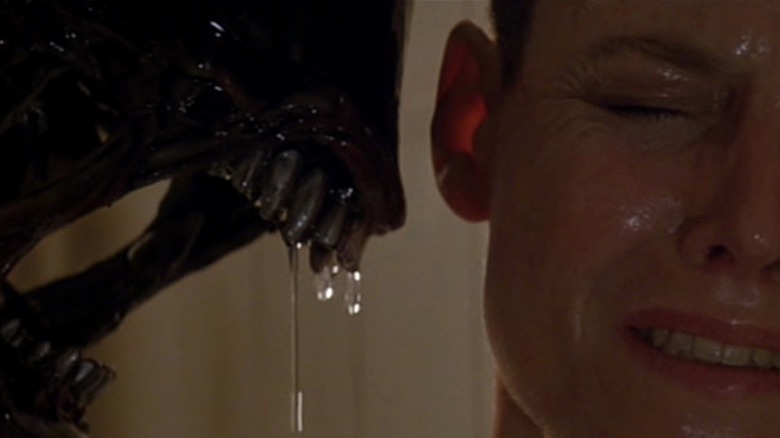
"Director Fincher is best known for his music videos and his MTV sensibilities are in full evidence, right down to the film's breakneck pace and jagged editing." -- Marc Savlov, The Austin Chronicle, May 29, 1992
In space, no one can hear you scream, unless you're with Savlov while he's watching "Alien 3" above the stratosphere. He didn't like the movie. I get it. "Alien 3" is not the horror classic "Alien" and it's not the action classic "Aliens." The story struggles to grab us because it doesn't bring much new to the screen. Ellen Ripley (Sigourney Weaver) is no longer an underdog and Xenomorphs are as beloved as Beanie Babies. Never fear, though, because Fincher knows how to torment characters.
He crashes Ripley and a Xenobyte into a space prison where murderers, molesters, and rapists have all sworn oaths of celibacy. She upsets that balance, turning these reformed people into monsters of a different kind. Before they get Ripley, though, chests start bursting and the action takes off. Savlov doesn't like Fincher's fast-paced editing but it's a style that the award-winning director has become known for later in his career. The camera is jittery and the material has been covered before, but this is David Fincher making his directorial debut with the "Alien" franchise. If that doesn't make you scream in ecstasy, you're probably reading this list by accident or you're my mom trying to rack up clicks for me. Hi, mom!
Fire In The Sky (1993)
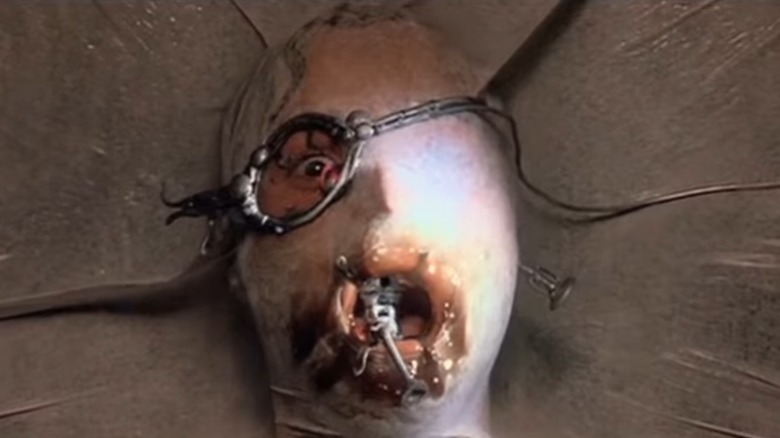
"... there's no disguising the fact that the first hour of 'Fire in the Sky' is little more than a laborious delaying tactic." -- Owen Gleiberman, Entertainment Weekly, March 26, 1993
Facts! The first hour of "Fire in the Sky" is tedious. It's peppered with abduction flashbacks, but never makes you care about any of the people involved, including abductee Travis Walton (D.B. Sweeney). Yet, you endure because you know what's coming: 13 minutes of what's essentially alien torture porn. Roger Ebert says the 13 minutes "convincingly depict a reality I haven't seen in the movies before, and for once I did believe that I was seeing something truly alien, and not just a set decorator's daydreams." Also facts!
The movie is based on the book of real-life self-described abductee Travis Walton but he couldn't remember the juicy abduction details. The studio brought in professional alien punch-up writer Tracy Torme (yes, son of Mel) to get under our skin –- and, boy, does he. You squirm in your seat as Walton tries to escape his alien tormentors. You want to look away but you can't because you need to eyeball every inch of the screen. Not to be outdone, composer Mark Isham somehow pulls off the impossible task of matching the disturbing visuals by scraping the back of your skull with his hollow, unearthly score. If you survive the first hour, I promise you that Ebert is right, and the abduction sequence will take you to a place you haven't been to before.
Event Horizon (1997)
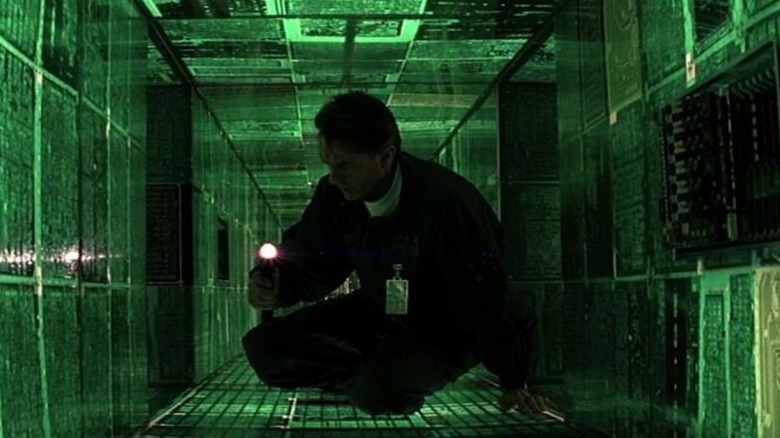
"... douses almost every scene with glitzy special effects in a futile attempt to cover up a paucity of thought." -- Stephen Holden, The New York Times, August 15, 1997
If "Alien" is "Jaws" in space, "Event Horizon" is "In the Mouth of Madness" in space -– replete with a maniacal Sam Neill. Holden is correct; Paul W. S. Anderson is known for putting style before substance. But I think he finds a balance here. Anderson was inspired by "2001: A Space Odyssey" and "Alien," which may be why he's a little more reserved ... for him. Most of the horror and gore is shown in flashes -- only a few times do you see someone bathed in blood. As I said, reserved for Anderson.
The story could have more thoroughly shown Dr. Billy Weir's (Neill) descent to evil instead of throwing him over the edge. One minute Dr. Weir is trying to save a life, the next he sneaks back into the shadows devilishly whispering, "I am home." What a home it is. Anderson uses full-scale models for the interior instruments and meticulously crafted scale models for exterior shots of the ships. Anderson even scanned Notre Dame Cathedral in Paris to bolster every aspect of the Event Horizon ship, as the cathedral was designed to "intimidate the populace." He nailed the space-horror aesthetic, because whenever this movie comes on, I darken the room, sneak back into the shadows of my living room, and devilishly whisper, "I am home."
The Faculty (1998)
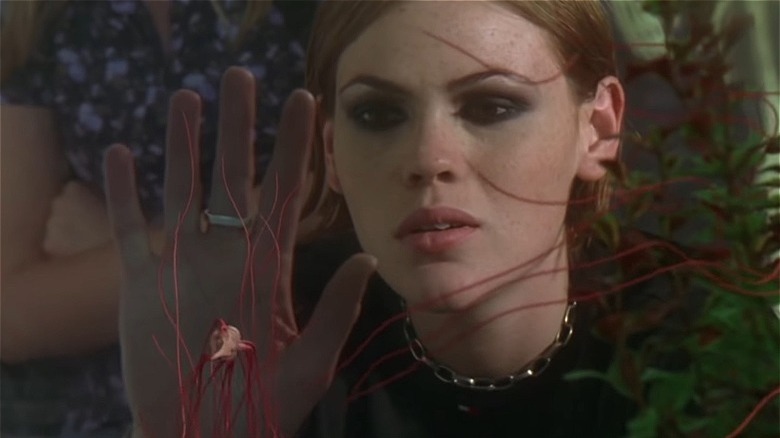
"Some of this is fun in a low-grade 'Hellraiser' sort of way, but it reduces the script's mildest ambitions to hamburger." -- Owen Gleiberman, Entertainment Weekly, December 25, 1998
"I'm a contradiction" is a line said in "The Faculty" that any character could have stated. Zeke Tyler (Josh Hartnett) is a brilliant flunkee. Delilah Profitt (Jordana Brewster) is a clueless news editor. Casey Connor (Elijah Wood) is a defiant bully victim. "Everyone is a contradiction" should have been the tagline of the movie and, guess what, there's a Tommy Hilfiger outfit to match every archetype. Yet, if you look beyond the aggressively marketed pop-collared polos and goth-mock turtlenecks, you'll find a fully developed sci-fi horror flick.
Director Robert Rodriguez expertly lays a trap for you by not showing too much early and by making you care for a handful of characters, even if they are somewhat cookie-cutter. The script is not great -- it's full of ground-up high school tropes and the kind of hyperintelligent chatter that bogged down many late '90s movies -- but it still feeds you a nourishing storyline. There's a creature on campus that's controlling the faculty and the kids will have to do more than stand on their desks to revolt. The movie unfolds like "Invasion of the Body Snatchers" or "The Thing;" everyone is a potential alien. There's not much "Hellraiser" present as Gleiberman suggests but it is low-grade fun, as he noted, and embodies its era, especially the soundtrack.
Pitch Black (2000)
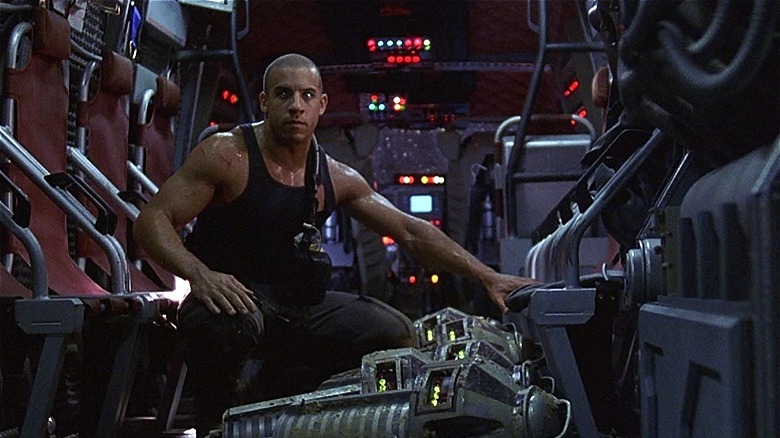
"Night is coming fast. But so is that sinking feeling we've seen this movie before." -- Desson Howe, The Washington Post, February 18, 2000
Long before Vin Diesel preached about family in the "Furious"-verse, he wandered the galaxy as a Furyan fugitive named Richard B. Riddick, dodging bounty hunters and death. "Pitch Black" kicks off the trilogy with a sci-fi horror film that won over audiences, but divided critics. Howe calls the film derivative, saying its creatures, landscape, and plot remind him of "Jurassic Park," "Mad Max," and "Alien." He says that like it's a bad thing.
The cast is excellent. Yes, Diesel chews rocks for dialogue, but it works. He's a gritty former soldier who's been buried alive under rubble and held in a subterranean prison. Radha Mitchell and Keith David lead a talented supporting cast. The world is dark but beautiful, with lighting only where it needs to be. The camera work cleverly follows the action from multiple perspectives. The creature chases are tense and the jump scares are earned. Many sci-fi and horror fans may be surprised to see "Pitch Black" on this list, but it was certainly panned. Bob Graham of the "San Francisco Chronicle" gave it a 0 out of 100, calling it a tiresome experience. Of course, that same year, he gave "Space Cowboys" a 100 out of 100, so take his review with a grain of salt (or rock if you're Riddick).
Pandorum (2009)
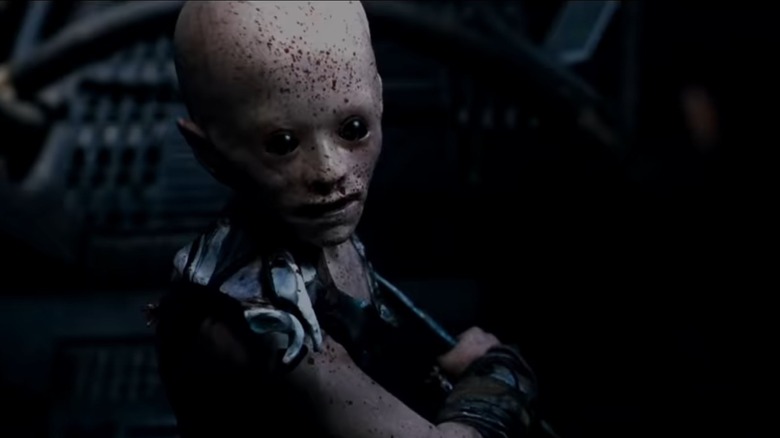
"Some scary moments, but its final half-hour is a right old mess, and the title is doomed never to be remembered." -- Anthony Quinn, The Independent, October 2, 2009
Fifteen minutes into "Pandorum," you think you're watching a psychological thriller set in space, and then a bunch of mutants rumble across the screen and rip apart some guy. What!?!? This is a creature feature?!? Quinn is on the money -– there are some scary moments. The tension is ratcheted up in the first few minutes with a realistic (I assume) look at how awful waking up from extended hypersleep must be. The physical agony comes with a form of psychosis called pandorum that's provoked by stress — and (I assume) your situation gets even more stressful when a gang of mutants starts running toward you on all fours, armed with sharpened, fire-protruding instruments of death.
"Pandorum" reminds me of, in some ways, "The Descent." It's claustrophobic and the only thing cast in light is what director Christian Alvart wants you to see. You don't get to scan the screen for potential terrors; they're on you before you know it. The creatures, best described as a mix of the underground dwellers from "The Descent" and the Uruk-hai from "The Lord of the Rings," are the true horrors of this ship, not the titular space psychosis. The effects of pandorum, though, add a layer of tension that drives the film's climax and sets you on course for a pleasant surprise ending.
Oblivion (2013)
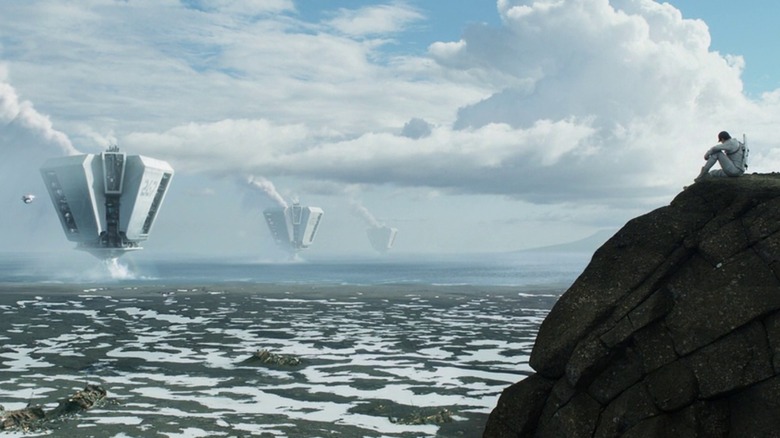
"Six minutes or 60 years after seeing the movie, viewers are unlikely to remember it." -- Richard Corliss, Time, April 19, 2013
Mr. Corliss, you are spot on. I forgot I had seen "Oblivion." My wife reminded me it's the one with Tom Cruise as Wall-E. Upon rewatch, it's easy to see "Oblivion" is overly complicated, with too many big sci-fi concepts that are integral to the central story. There's an alien invasion, a cataclysmic event, an escape ship to save civilization, cloned people, survivors underground, and other survivors sleeping in space -- but -- only some of those things are real. If you step back, the story arc looks like the tangled ball of Christmas lights Clark Griswold pulls out of his garage. It's a lot for our brains to untangle.
On second viewing, the cord does start to unravel. You can follow the story arc back to its origin point, and once plugged in, the whole thing lights up wonderfully. The movie is sci-f-eye candy (trademark) and those of us who've been paying attention are not surprised. Director Joseph Kosinski is behind the "Gears of War" commercial many of us geeked out to in 2006 and he expertly landed "Top Gun: Maverick" last year. Watch "Oblivion" again and look to the far corners of your screen. Take in the dazzling effects that bring this beautifully damaged world to life and sit forward for the heart-jolting action sequences. Once you understand the story, it becomes a world you won't forget.
Earth To Echo (2014)
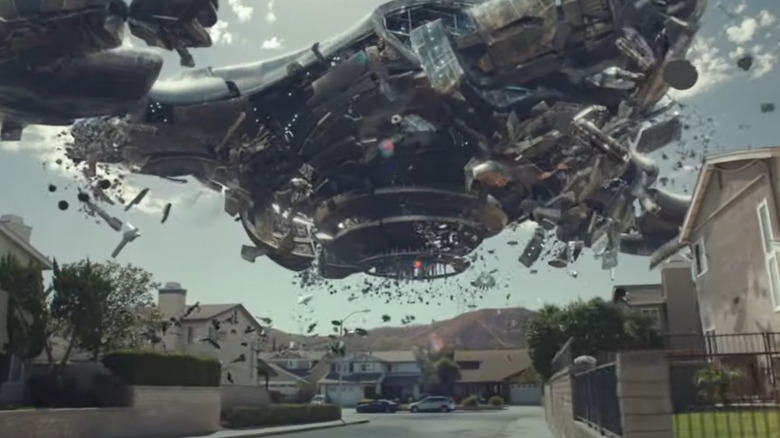
"Even at a cramped and frenetic 82 minutes, the movie feels long. That's what happens when the audience can guess everything that's going to happen..." -- Kyle Smith, New York Post, June 30, 2014
"Earth to Echo" is not an "E.T." rip-off. It's an homage, a rendition of a classic, and its source of inspiration is so obvious that it reverberates in its title: "Earth to Echo" or "E.T. Echo." A neighborhood just like the one that felt so alive in "E.T. The Extra-Terrestrial" is in danger of being torn down to build a freeway, a social issue rarely explored in movies. It turns out the freeway work is a front for an organization trying to capture Echo but a group of intrepid kids won't let that happen. It's a familiar story for "E.T." fans -- especially the kids-on-bikes-save-the-alien theme -- but the directing style differentiates itself enough that it becomes its own experience.
Smith deems found footage a tired fad. "Earth to Echo" takes a refreshing approach, however, by utilizing multiple photographic formats including phones, GoPros, and video streams. The special effects also elevate the movie; Echo uses telekinesis to reassemble his ship from scrap parts that come from all over your screen. Overall, there are enough parts assembled from "E.T." that the film successfully transports Amblin fans back to the San Fernando Valley, but the modern tools used here tell the story in a way that's familiar to a new generation of sci-fi fans.
Underwater (2020)
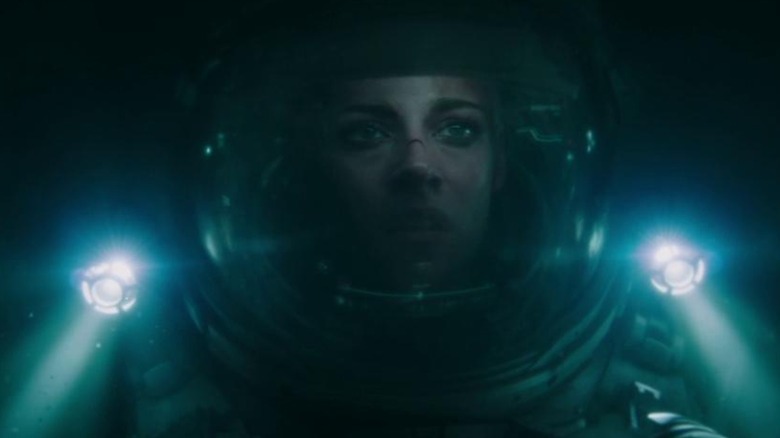
"An acceptable creature feature at best and a waterlogged 'Alien' at worst ..." Ty Burr, The Boston Globe, January 9, 2020
Underwater, no one can hear you scream awful phrases like, "I wanna tie myself to you in every humanly way possible." Forget the fang-banging Kristen Stewart of yore. A new, powerful KStew has ripped through that porcelain-skinned doll who fawned over faux monsters. As Norah Price in "Underwater," she faces a real threat. Price is the mechanical engineer of a drilling facility that's uncovered something horrible seven miles below the water's surface and she's going full Ripley to take it down. To the untrained eye, "Underwater" is indeed a waterlogged "Alien" rip-off. Those of us who immerse ourselves in sci-fi creature features will call out that false comparison because we know that "Underwater" is really a waterlogged "Cloverfield" -- and it's fantastic.
There's no shaky "Cloverfield"-style camera to make you sick, though the tight confines of the collapsing Kepler 822 can make you queasy. Some of the movie's murky shots are too much for Burr and other critics to swallow, but if you look past that murkiness, something big is lumbering your way: an immense and intense creature feature. If you're not a Kristen Stewart fan, don't worry, after seeing "Underwater," you'll be 100 percent Team KStew.
The Tomorrow War (2021)
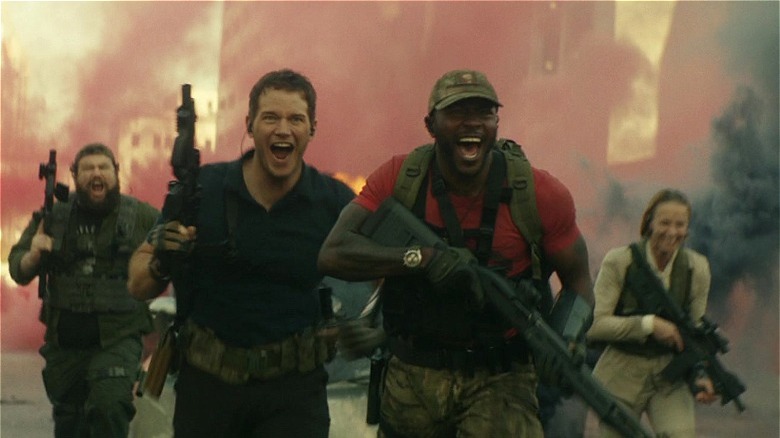
"... it's a big, blundering, CGI-heavy action sci-fi that works within its genre mould rather than outside it." -- John Nugent, Empire, July 2, 2021
I love Sam Richardson.
Editor's note: Brendan, you need 146 more words.
Can I type Sam Richardson 74 more times?
Editor's note: No.
"Tomorrow's War" is a clever sci-fi concept: Earthlings from 2051 arrive in the present day to recruit soldiers for a future alien war. First off, the effects are brilliant; the aliens are thoughtfully designed based on creative and real-world sources and rendered by a veteran VFX team. The action sequences are spectacles with function; they demonstrate the stakes and show you how unprepared humankind is for this fight. The people of 2022 face insurmountable odds in this battle. If only someone could represent the growth we need to see humankind, and the story, take to succeed and survive.
I present to you, Sam Richardson -- from "Veep" and "Ted Lasso" -- as Charlie!. The story operates within the confines of normal sci-fi. Yes, critics, I understand you saw similar aliens in a similar war in "Starship Troopers." I'm glad, however, this movie is not also a sci-fi sendup. That kind of humor is so 1997 (just like this joke). Instead, we get Charlie. He progresses from a hilariously nervous rookie to a chainsaw-wielding veteran. Charlie shoulders both comedic relief and climactic catharsis. The character breaks the genre "mould," and Sam Richardson, who steals the show, deserves top billing. Sorry, whichever Chris is also in this movie!
Read this next: The Most Controversial Scenes In Sci-Fi Movies
The post Critically-Panned Sci-Fi Movies That Are Actually Worth Your Time appeared first on /Film.

